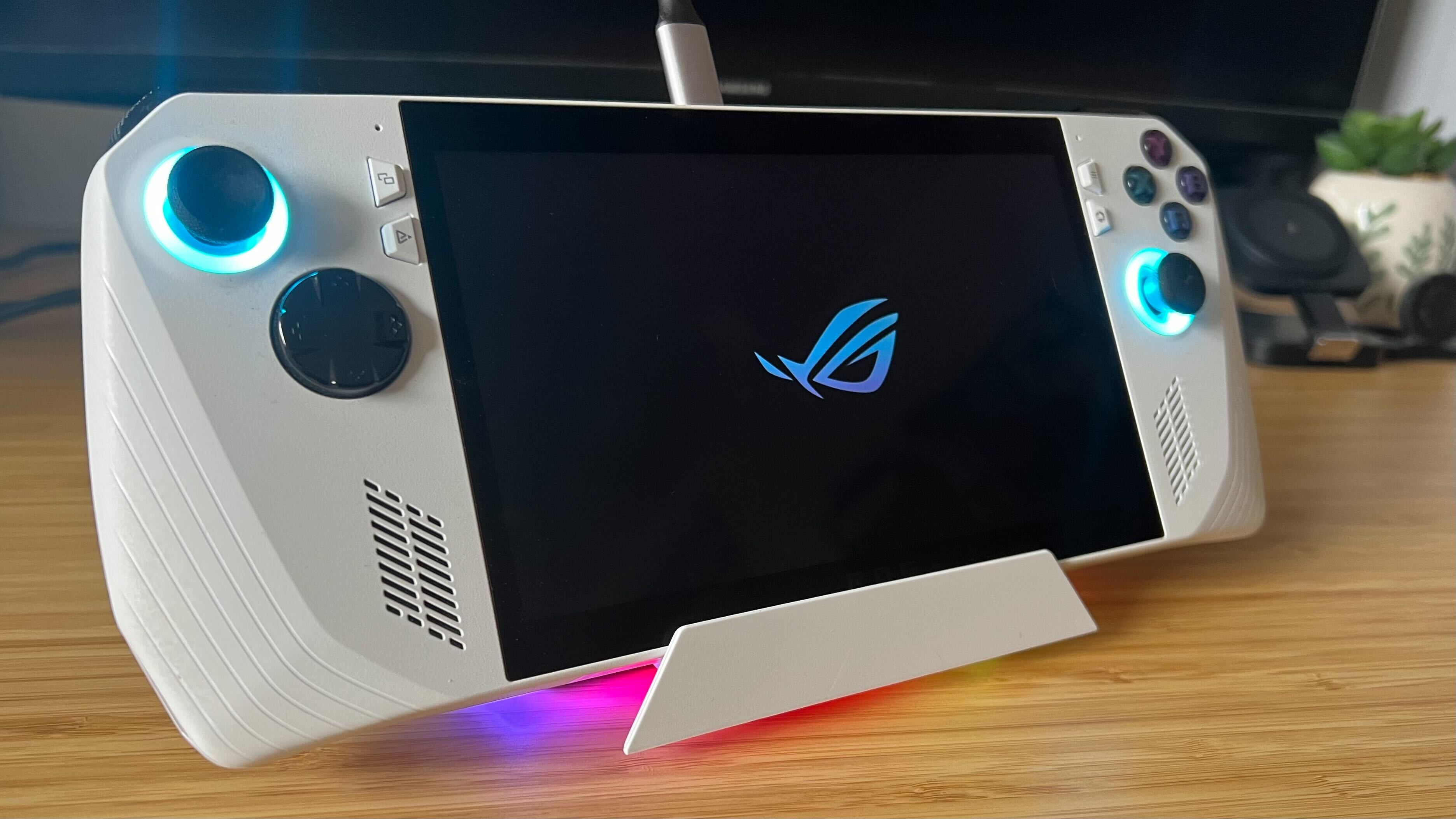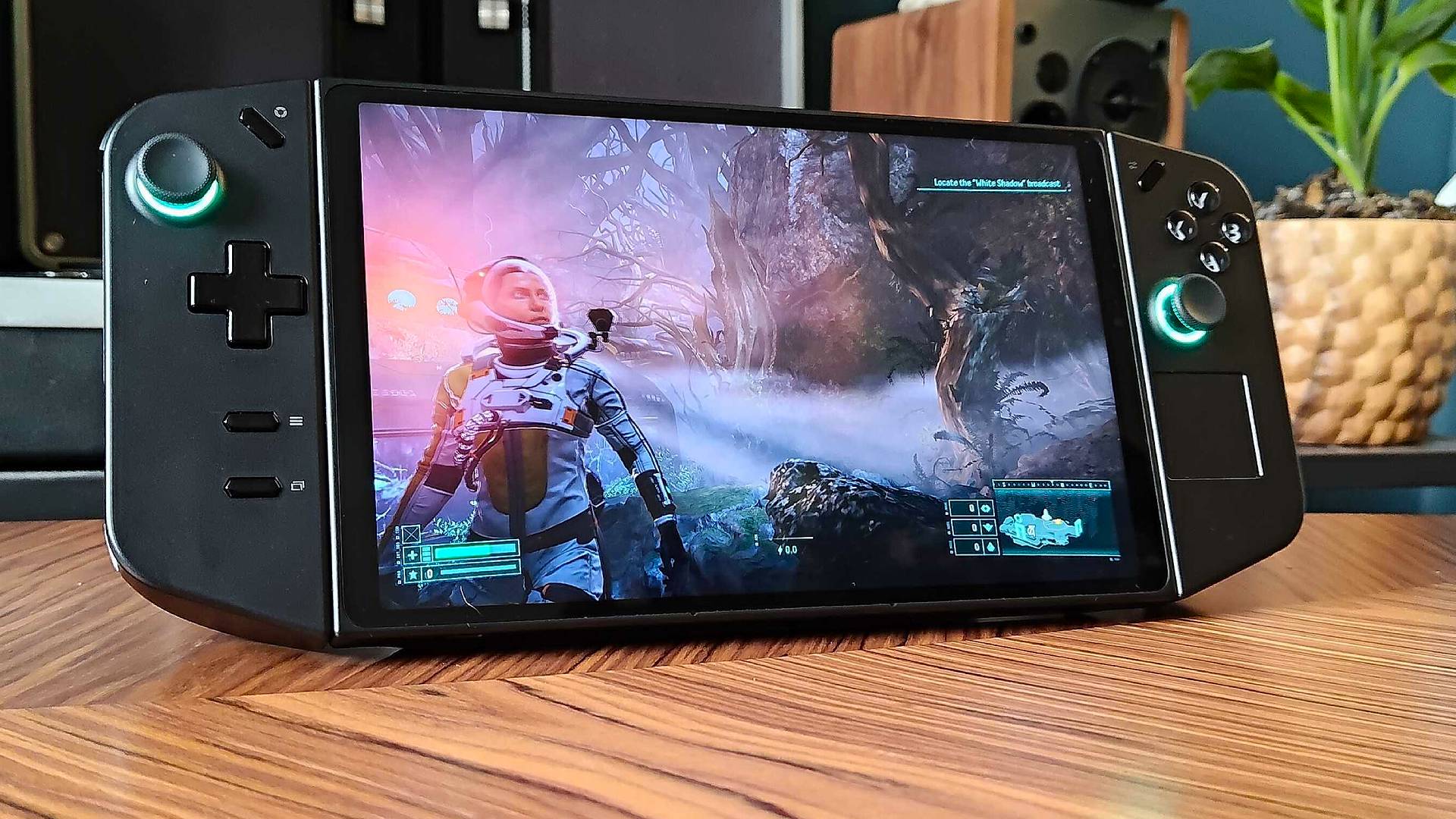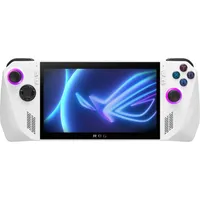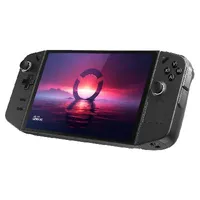I've been testing gaming handhelds for years, and the Asus ROG Ally is eating the Lenovo Legion Go's lunch this Prime Day

I'm not here to cause a scene, but I solemnly believe you should by the Asus ROG Ally over the Lenovo Legion Go this Prime Day. I've tested both those portable PCs and countless handhelds spanning back well over a decade, and Best Buy's current deal on the former is just one reason why it trumps its larger, clunky rival.
Before I delve into my reasoning, here's the skinny the current Prime Day Asus ROG Ally deal. Over at Best Buy, you can currently grab the Z1 Extreme model for $549.99 thanks to a $100 discount. At full price, you're looking at $649.99, but it's important to note even that price is cheaper than its original $699.99 MSRP.
That's who we've got in the blue corner, but the Lenovo Legion Go is standing with gloves raised in the red, as you can grab the 8.8-inch handheld PC at Amazon for $598.99 at Amazon. Not a shabby discount by any means considering it'll normally set you back $699.99, but it actually showed up back in June for $579.99, so I'm not exactly thrilled about this current offer.
Prime Day's best gaming handheld deals
Asus: ROG Ally models from $399
Anbernic: 20% off the RG35XXSP
AYN Odin: $42 off using coupon
Switch: now from $274 (was $299.99)
Steam Deck: docking stations from $20
Razer: 38% off the Edge Wi-Fi
Asus ROG Ally (Z1 Extreme) | $649.99 $549.99 Best Buy
Save $100 - Best Buy has a $100 discount on the Asus ROG Ally Z1 Extreme right now, dropping the already-reduced $649.99 MSRP down to $549.99. That's impressive considering this rig originally launched at a full $699.99.
Buy it if:
✅ You want to play more than Steam
✅ You want solid performance
✅ You don't want to pay for extra gimmicks
Don't buy it if:
❌ You only play Steam games
❌ You like the sound of detachable controllers
Price check: Amazon $605 | Walmart $609.99
Lenovo Legion Go | $699.99 $598.99 at Amazon
Save $100 - The Lenovo Legion Go is also seeing a $100 discount this Prime Day, only it's over at Amazon and only leaves us with a $598 sale price. I've seen that model down at $579.99 in the past, but in the right hands this could be a winner.
Buy it if:
✅ You want mouse-like controls
✅ You want better display specs
✅ You want full Windows flexibility
Don't buy it if:
❌ You want a more reliable OS
❌ You won't use the detachable controllers
Price check: Best Buy: $599.99 | Walmart: $598.99
Asus ROG Ally vs Lenovo Legion Go: Which handheld should you buy this Prime Day?

When you get down to the nuts and bolts, the ROG Ally and Legion Go are extremely similar beasts. In a way, Lenovo's best gaming handheld contender feels like an answer to Asus' Steam Deck rival, as it feels more like a flamboyant prototype than something I'd play Steam games on comfortably and reliably.
Yes, quite a few of my feelings towards the laptop maker's portable PC are subjective, but as GamesRadar+'s resident handheld nerd, I have a good feel for what players will generally resonate with. Factors like comfortable controls, reliable software, and easy to access settings are vital when bridging the gap between the gaming PC realm and games console scene, and honestly? I think the Lenovo Legion Go misses the mark on too many of those fronts.
That's not to say that the Asus ROG Ally is a saint, and it's got a long way to go beforeit'll topple the Steam Deck OLED in my eyes. Part of the problem is the fact it uses Windows 11, as Microsoft's operating system lacks UI elements to make handheld play feel natural. But, if we're talking Ally Vs Go, I think Asus Armoury Crate does more to tackle the issue than Lenovo's Legion Space software, which is both slow and has a less than ideal layout.
| Specs | Lenovo Legion Go | Asus ROG Ally |
|---|---|---|
| CPU | AMD Ryzen Z1 Extreme | AMD Ryzen Z1 Extreme |
| GPU | AMD RDNA 3 | AMD RDNA 3 |
| RAM | 16GB LPDDR5-6400 | 16GB LPDDR5-6400 |
| Storage | 512GB M.2 PCIe 4.0 SSD (2230) | 512GB M.2 PCIe 4.0 SSD (2230) |
| Display | 8.8-inch IPS 1600p 144Hz | 7-inch IPS 1080p 120Hz |
| Battery | 49.2Wh | 40Wh |
| Operating system | Windows 11 Home | Windows 11 Home |
| Weight | 854g | 608g |
In terms of specs, the Lenovo Legion Go should be holding the belt, with an 8.8-inch 144Hs QHD display out flexing the ROG Ally's 120Hz 1080p panel on paper. For what it's worth, that would have been the case if the Go wasn't rocking the same AMD Ryzen Z1 Extreme APU, as there's a reason why most handhelds with this chip stick with full HD. Simply put, unless you're playing older releases within your Steam backlog, you've got no chance of hitting 1600p in most new releases.
Sure, you can simply run games at a lower resolution and refresh rate using software settings, but this caused me nothing but problems during my review. I'm a big believer that matching screens to system specs is a necessity, and while Lenovo is clearly aiming for flexibility with its decision, it ultimately feels like a mismatch.
Sure, you can simply run games at a lower resolution and refresh rate using software settings, but this caused me nothing but problems during my review. I'm a big believer that matching screens to system specs is a necessity, and while Lenovo is clearly aiming for flexibility with its decision, it ultimately feels like a mismatch.
I could go on further about how the Legion Go’s TrueStrike gamepad compromises on providing quality controls and how it feels clunkier than most other portable PCs out there. However, I’ll summarise by saying the Asus ROG Ally by comparison builds upon the great new handheld fundamentals established by Valve by boasting a nice ergonomic design, excellent buttons, and a sensible weight. If you’re specifically looking to splash out over $500 on a Windows 11 gaming device this Prime Day, opting for the Ally is going to both save you money and result in a more balanced on-the-go gaming experience.
Looking for more Amazon offers? Swing by Prime Day TV deals and Prime Day monitor deals for big screen savings. Alternatively, check out Prime Day Steam Deck deals if you fancy picking up Valve's portable.
Weekly digests, tales from the communities you love, and more

Phil is currently the Hardware Editor at GamesRadar+ who specialises in retro gaming, the best gaming handhelds like the Steam Deck, and more modern components like graphics cards. Having spent years offering up classic console advice and over a decade as a gaming journalist for big names like TechRadar, The Daily Star, the BBC, Den of Geek, and many more, Phil now dedicates their days to covering the latest news and offering up invaluable setup advice.




